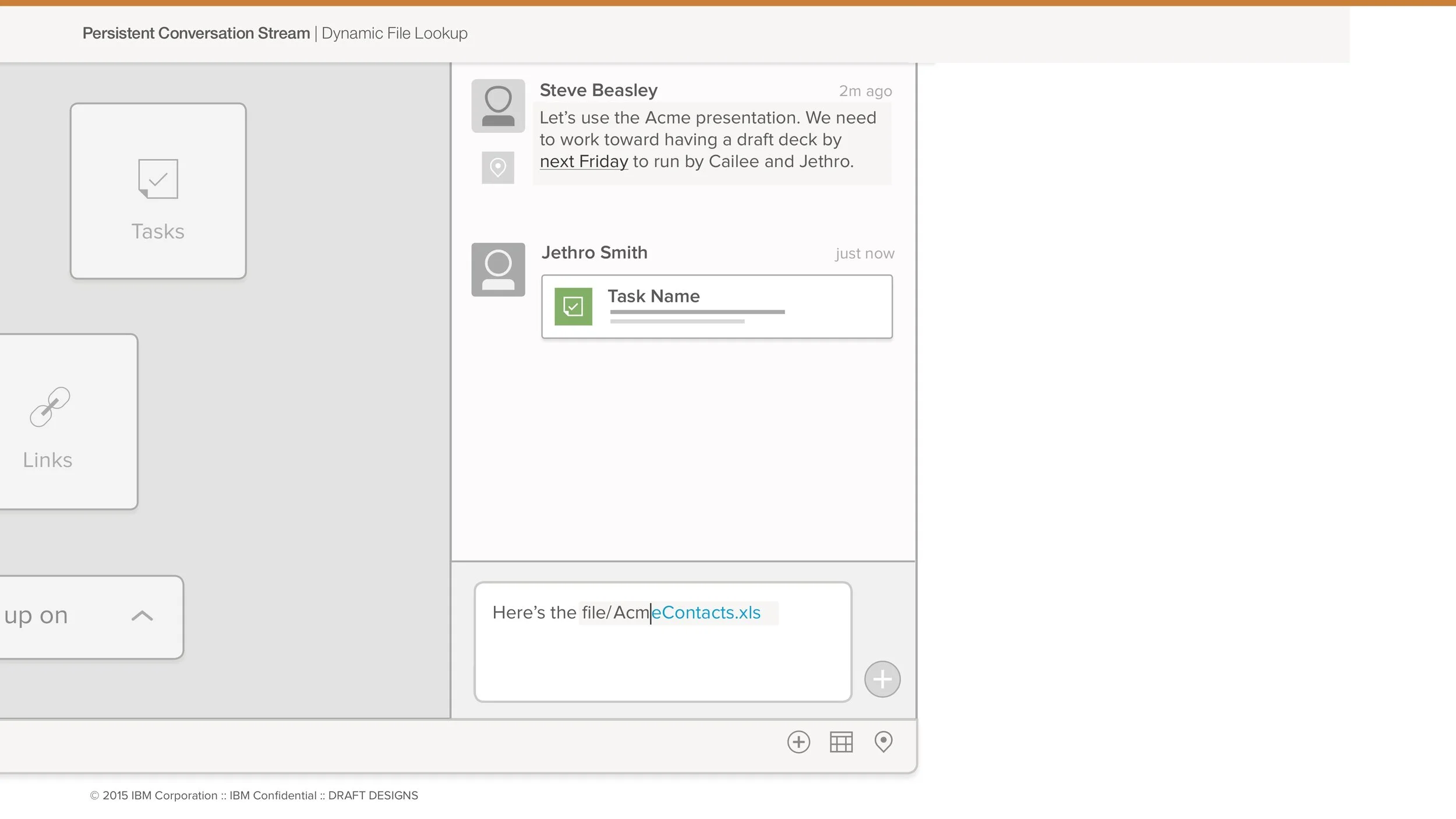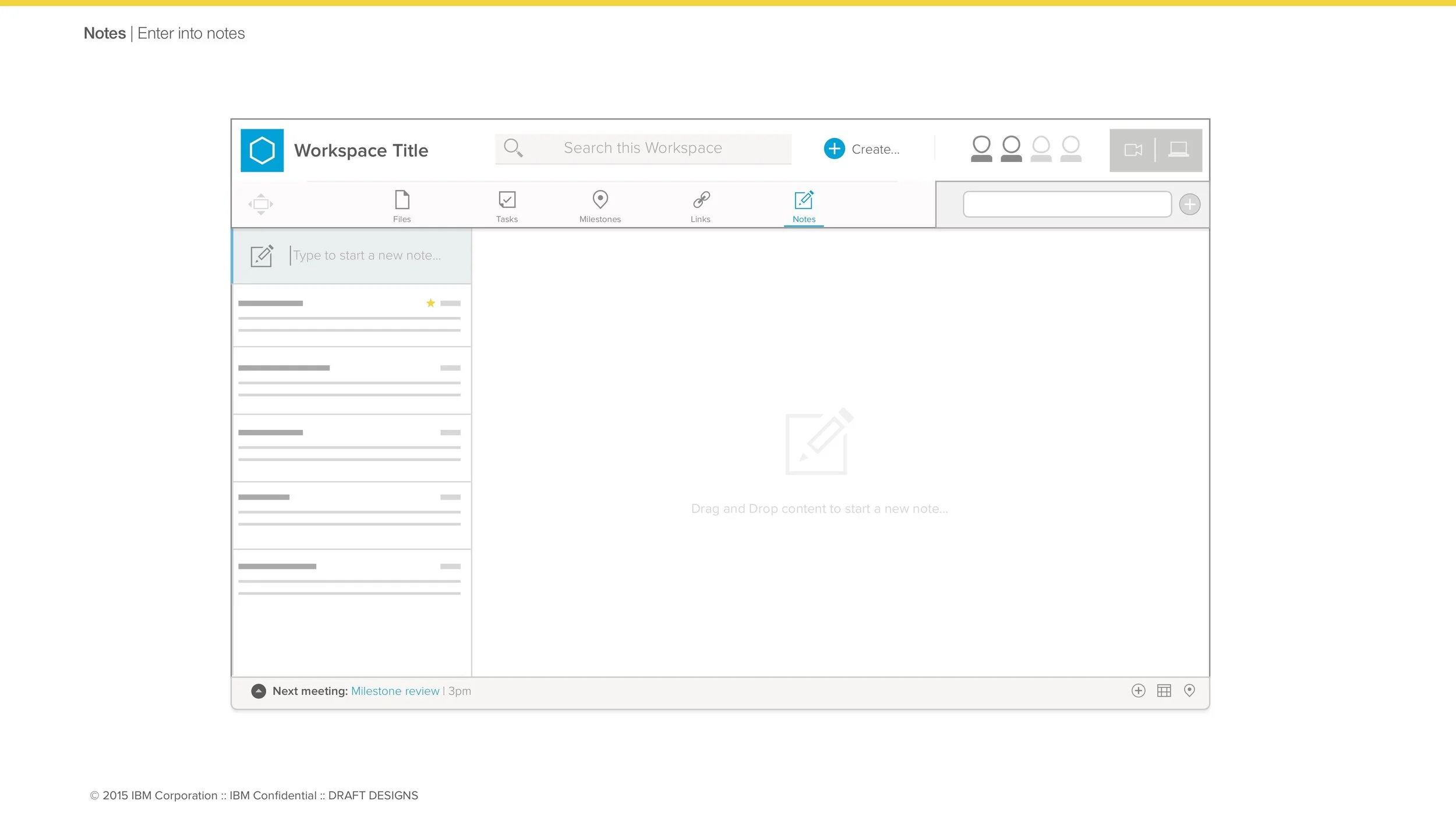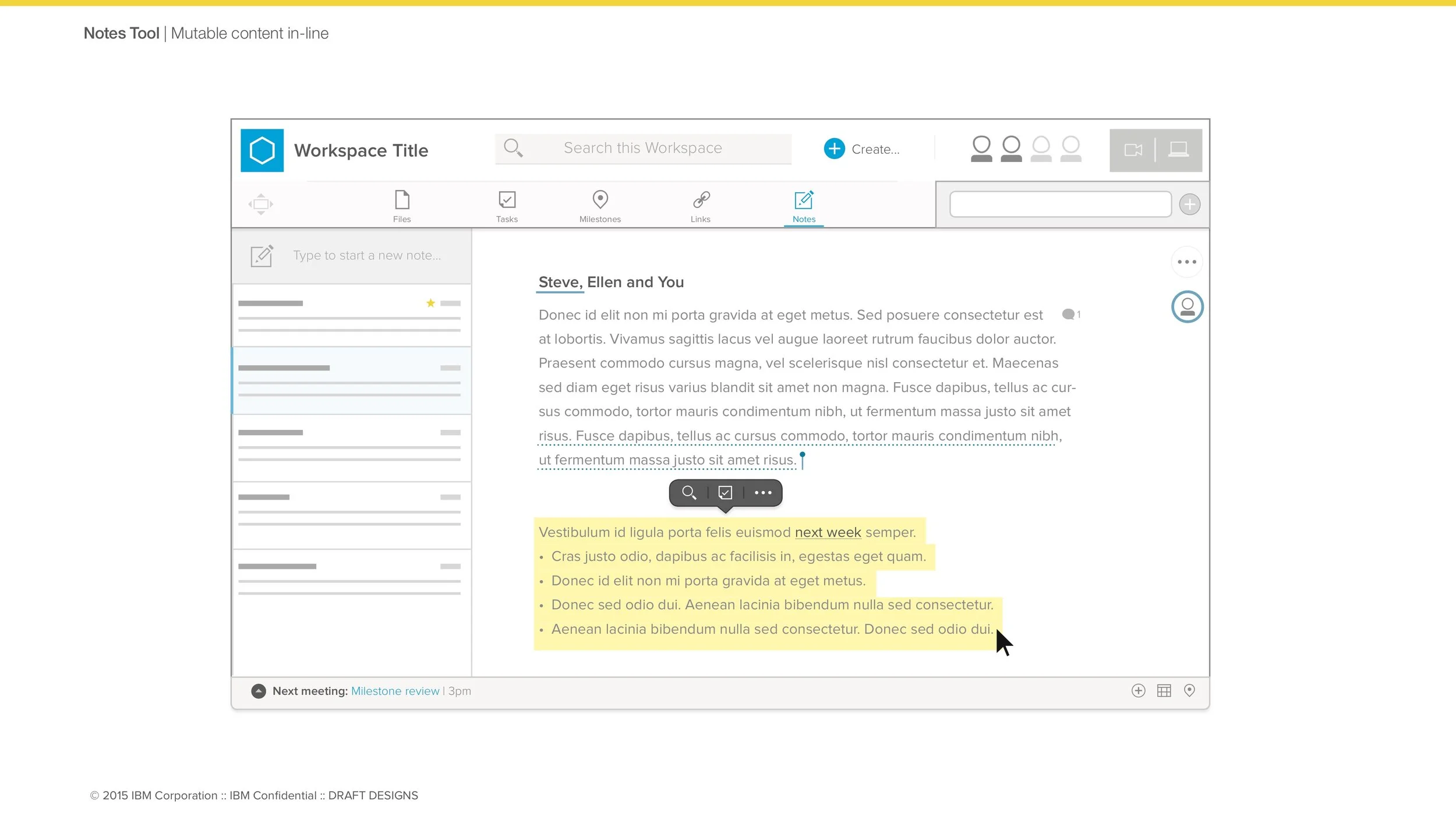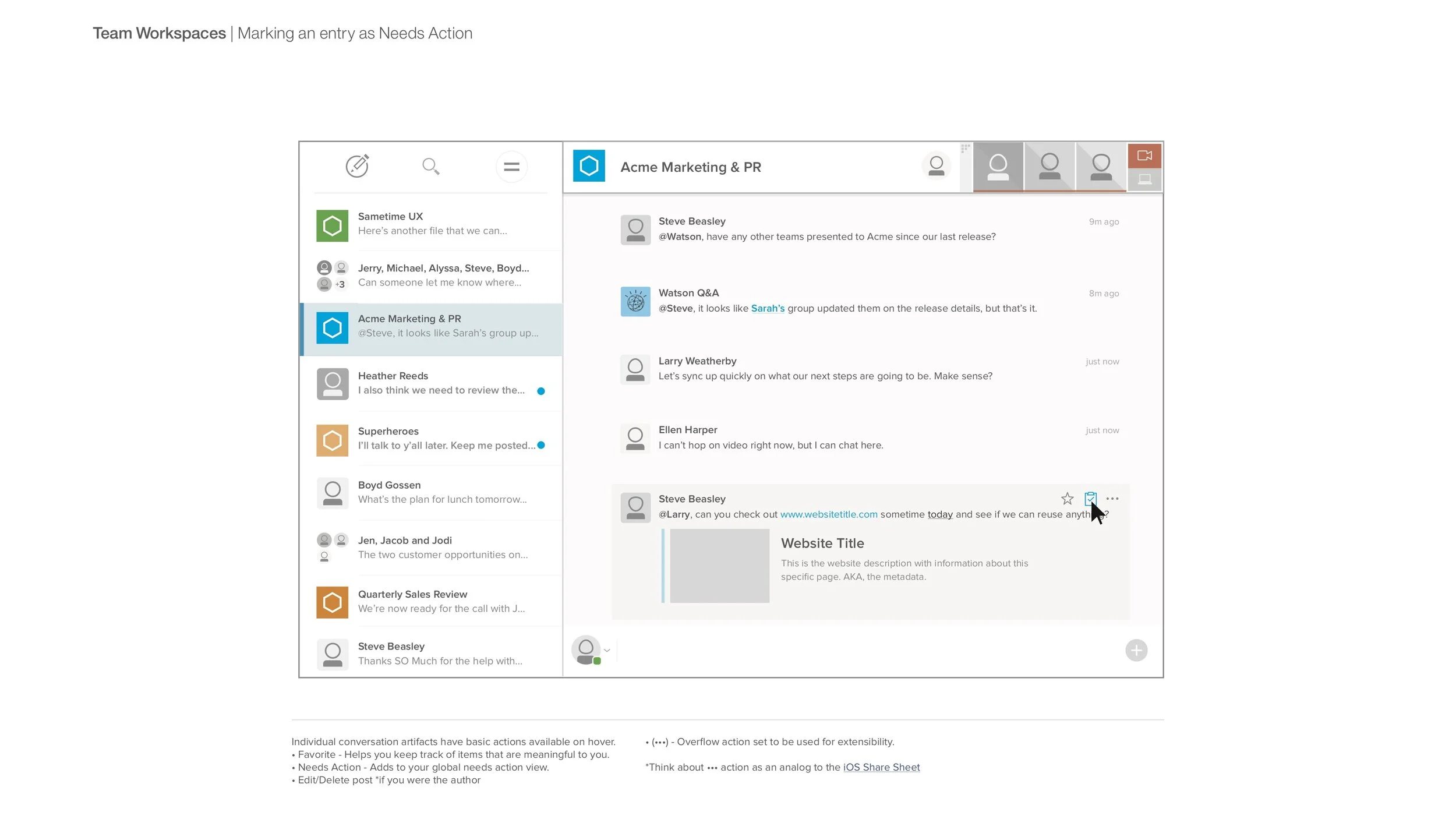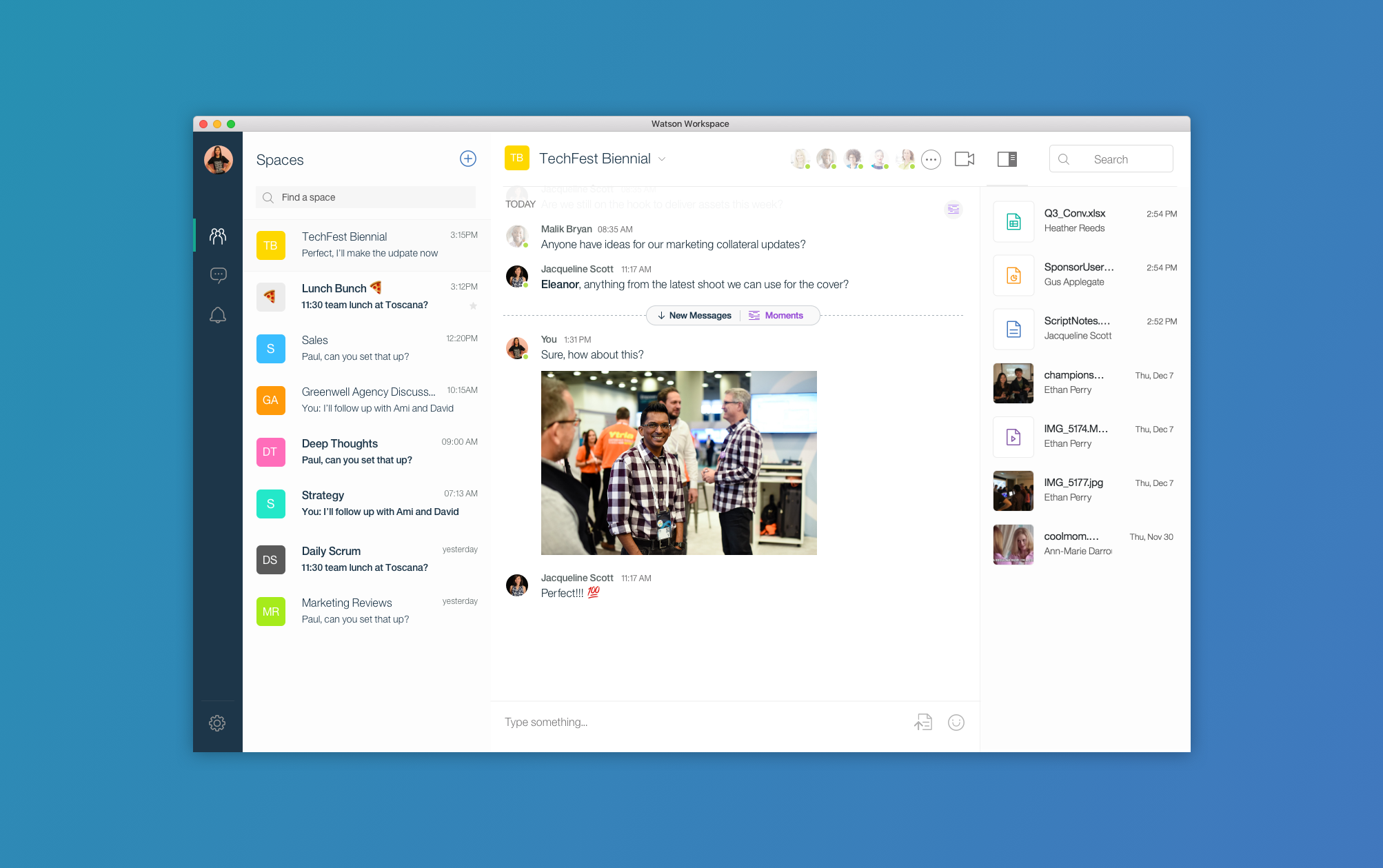
IBM Watson Workspace
Watson Workspace started in early 2014 as a design-led initiative to better address the needs of small team collaboration.
What began as a 5 person skunkworks startup inside of the 3,000 person Collaboration Solutions software group quickly grew to an independent business unit overseen by an externally hired VP with a total staffing of almost 300. The focus was on radically differentiating from IBM’s typical processes and tooling. We built our software on AWS rather than IBM’s cloud while partnering with Box for asset storage and Zoom for video conferencing capabilities rather than using IBM’s homegrown tooling and services.
“If we weren’t the incumbents in these markets what would we building next?”
I was asked this question by a VP of a business unit that had deep legacy marketshare for traditional collaboration methods. Its’ Lotus Notes email product was one of the very first in the world. Its’ Sametime instant messaging and video conferencing business was likewise one of the first and largest entities in the space. The youngest offering in the portfolio was a decade old Collaboration tool called IBM Connections which had communities, wikis, files, and microblogging for large enterprises.
Email was never going to die, people liked chatting with each other but needed better opportunities for asynchronous communication, and Communities of interest/engagement were great places to store content but often struggled with deep meaningful collaboration.
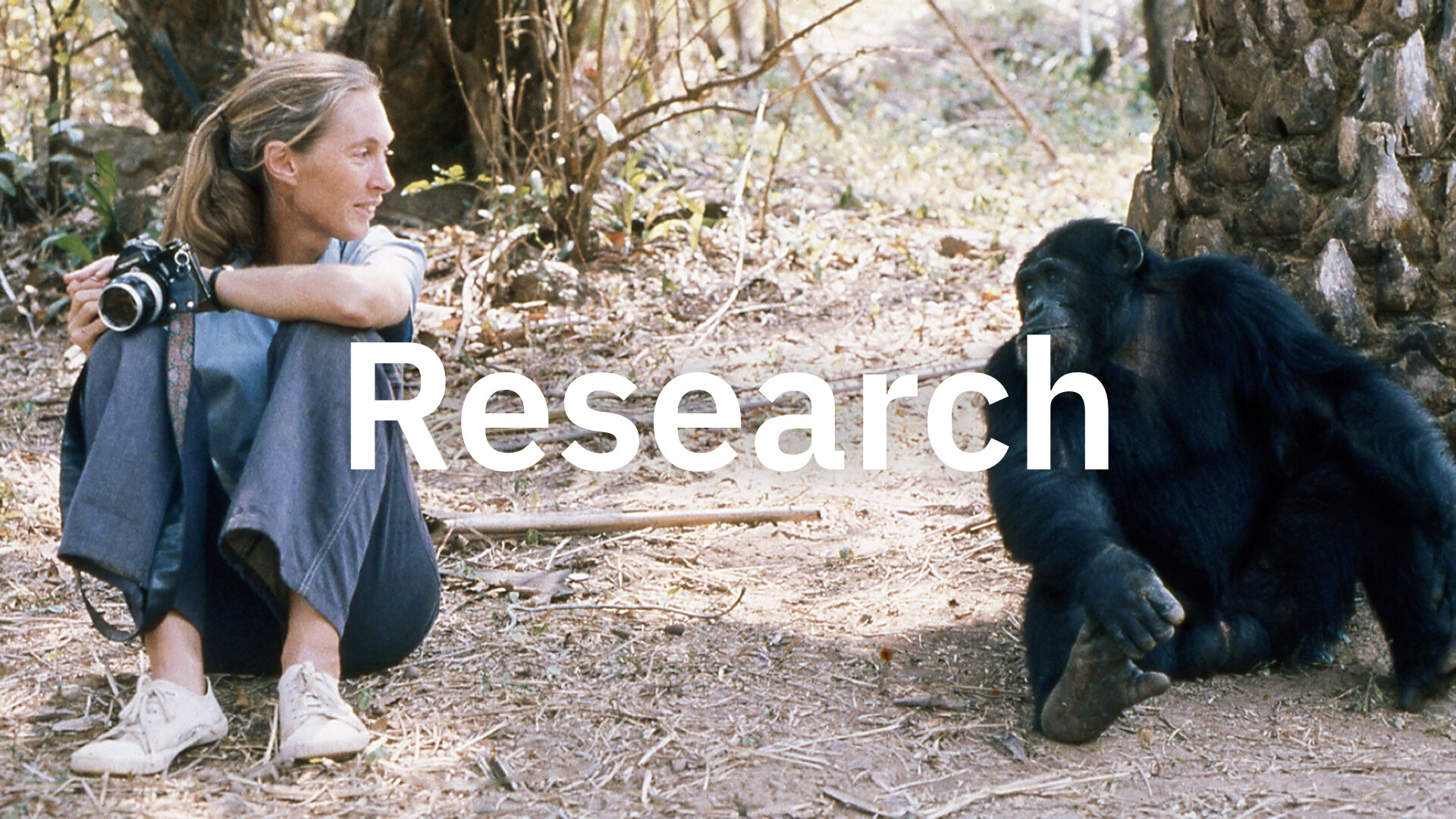
Defining Collaboration
To ensure that we were headed in the right direction we started with deep ethnographic research on what meaningful collaboration means, how individuals relate to a team, as well as defining the various archetype personas found in the types of large enterprise organizations that we were designing for. The research was carried out and synthesized by the entire team rather than just researchers to ensure that we all knew the direction so intuitively that we could make bold decisions and design quickly with our north star in place.
Research methods included behavioral interviewing individually and whole teams, personal journaling, and conducting experiments in creating ideal tools with hundreds of participants.
Roles and behaviors were scrutinized to look for meaningful differences in collaboration needs.
Each archetype was comprised as an aggregate of dozens of users. This was the highest fidelity archetype I’d ever experienced.
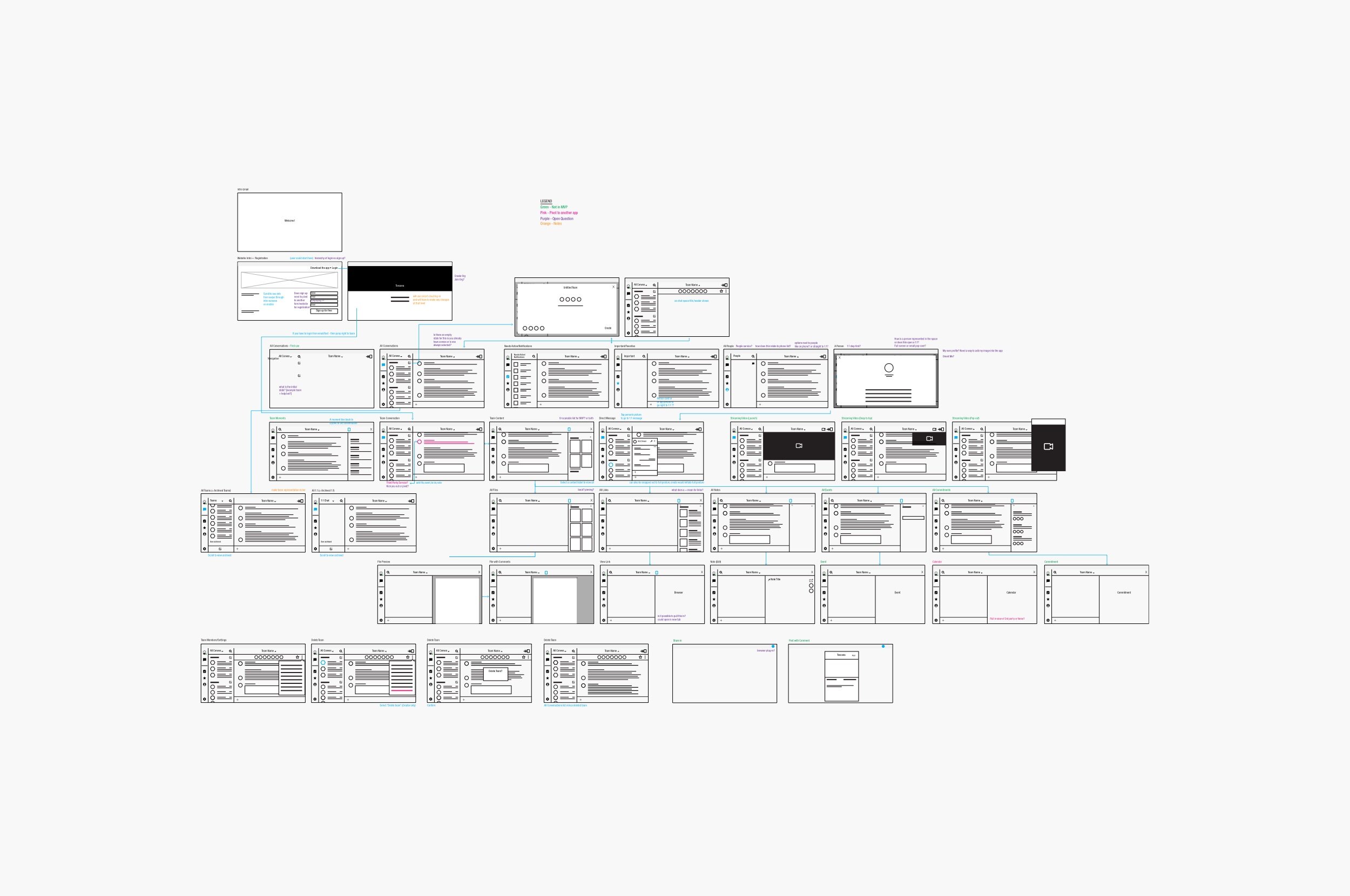
Iterative Steps
These were the days before Slack had launched and MS Teams was still a few years away from existence as well. The IBM Business expected our team to say that we needed to polish a few loose ends on our existing offerings. However, we introduced a vision for a conversational UI with a distinct focus on privacy, autonomy, trust, and shared spaces where deep work could take place before being broadcast or archived elsewhere. We found that teams needed a persistent workspace with a defined membership, files, notes, A/V, a chat stream, and a set of artifacts to aid in organization.
Conversation to the Foreground
Our next round of designs put the emphasis on the chat stream as a vehicle for all other collaboration while maintaining opportunities for video, files, and overall organization of commitments and team goals. We had finally found the right paradigm that resonated with users and began to flesh out the rest of the experience.
Product Experiences
We delivered a core conversational collaboration experience for web, Mac and Windows desktop apps, Android phone, and iPhone and iPad apps. At this point we had left the IBM Collaboration Solutions to become part of the Watson ecosystem of Ai fueled experiences.
We prioritized continuity of experience across the various product touchpoints while still utilizing the individual HIG from each OS. We knew that our users were constantly moving between web, desktop, and mobile—sometimes using them concurrently.
Watson Moments became one of the first examples of the IBM Watson technology being available to consumer end users.
Watson Action Fulfillment (AF) allowed 3rd-party developers to target neurolinguistic cues and tie them to custom workflows in a pattern that users were familiar with. As easily as tapping to create a calendar event users could automate their conversation and create powerful long running extended events.
In addition to the core experience we also engaged in whitelabel partnerships with IBM Watson Health and were in talks with Salesforce to be a conversational engine that could live inside of their core UX.
We partnered with Zoom as our A/V provider and worked with them to extend our Watson Moments to also work on live video feeds to help users catch up when they joined meetings late or needed to revisit and summarize when they weren’t able to attend at all.
End to End Experiences
Running as though we were a startup in the enterprise we also needed to design, build, and launch all of the standard user touch points in an end to end customer journey. Again we were tasked to use best of breed solutions that went outside of the typical IBM homegrown solutions.
We enabled self-service user creation and the ability to pay for an individual license with a credit card. This was one of the only software products at all of IBM that had this capability. Our product design team designed the ibm.com marketing page as well as blogged on Medium to share the product journey with end users.
We designed email templates for product information series as well as an internal microsite to help enable IBMers who wanted to use Watson Workspace.
We designed, ran, and authored all of the content for our help center that was powered by Zendesk.
We designed and built an admin portal to enable user provisioning and management as we began to offer tiers of service (Freemium, Basic, Plus).
We designed and built a DeveloperExperience site for our 3rd-party integrators to test their apps with our Watson endpoints. We included documentation as well as graphQL sandboxes with live code samples.
In addition to uptime alerts on our help center, we designed and deployed a granular live status site using status.io.





